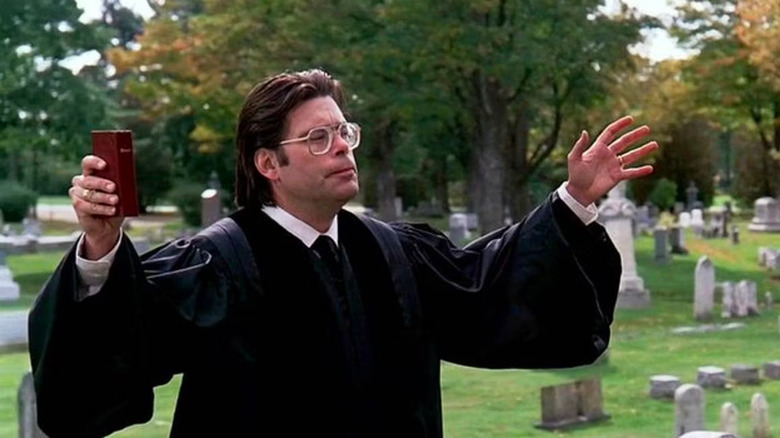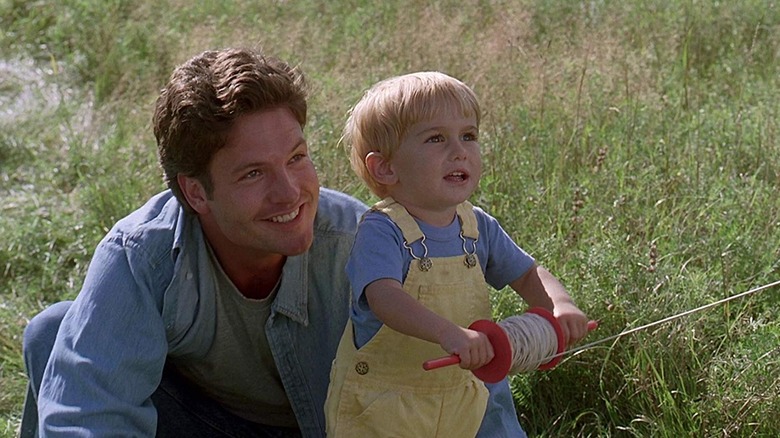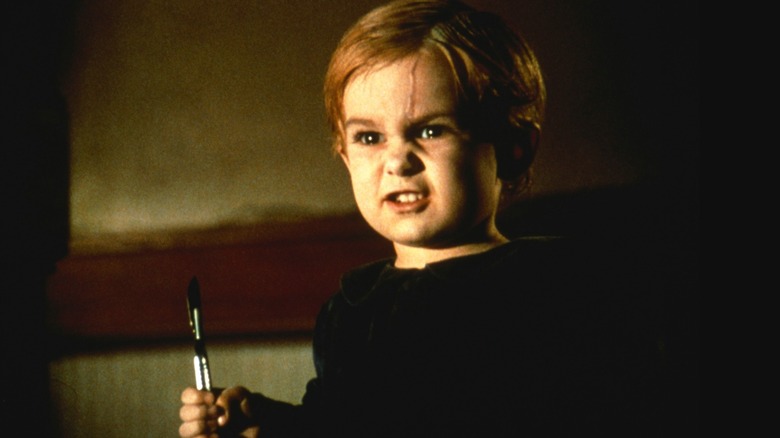Pet Sematary Producers Wanted To Cut The Saddest Scene, But Stephen King Said No
When "Pet Sematary" was published in 1983, it came with a killer marketing hook: it was billed as the book that was so scary it even frightened its author, Stephen King. Whether or not that was true was immaterial; it was too good to ignore — Stephen King, the master of horror, had penned something that scared even him! To hear King tell it, which he has numerous times over the years, he found the book so disturbing — particularly its ultra-dark subject matter — that he stuffed it in a drawer, only to later pull it out to fill a contractual obligation. I'm a big Stephen King fan, and "Pet Sematary" is my favorite King novel. My first encounter with the material wasn't the book, though — it was Mary Lambert's 1989 film adaptation.
I was six in 1989, which is probably way too young to watch "Pet Sematary." But watch it I did, and folks, let me tell ya, it scared the bejesus out of me. The story is all about death, and death wasn't really a concept my six-year-old brain ever really considered. On top of that, a kid dies in the story, and if that kid could die, it meant I could die, too. I was traumatized. So I don't know if "Pet Sematary" really scared Stephen King, but it sure as hell scared me.
Lambert's film, which has a script penned by King himself, is pretty faithful to the book. In addition to being scary, the film, like the book, is rather bleak — there's not a lot of levity to be found in a story all about death and dying. And when it came to making the movie, Lambert actually had to deal with producers worrying that some of the material was just too sad to keep in the film. Thankfully, she had Stephen King in her corner.
Sometimes, dead is better
In "Pet Sematary," Dr. Louis Creed (Dale Midkiff) and his family move to the small town of Ludlow, Maine. As it so happens, there's a pet cemetery in the woods near their house. And even deeper in those woods lurks another burial ground — one with the power to bring the dead back to life. The family cat, Church, is run down in the road one day, and Louis' elderly neighbor Jud Crandall (Fred Gwynne) takes him to bury the dead animal in the cursed burial ground. Sure enough, Church comes back to life, only he's not the cuddly cat he once was. Instead, he's a creepy, hissing creature that gives Louis the heebie-jeebies. A zombie cat is scary enough, but things get worse for the Creed family later in the film when their youngest son Gage (Miko Hughes) is also run down in that same damn road. As you might guess, Louis decides to bury Gage in that same burial ground. Gage returns and he's now a tiny killing machine.
Before Louis buries his son, though, there's a rather unpleasant scene set during Gage's funeral, where Louis' father-in-law accuses Louis of letting Gage die (it's not really covered much in the film, but the novel explains that Louis and his father-in-law have a lot of bad blood between them even before Gage dies). A fight breaks out and Gage's tiny coffin is knocked over, resulting in hysterics from the onlooking mourners. And it was this nasty little scene that caused problems for director Mary Lambert.
Thanks, Stephen King
A lot of dark stuff happens in "Pet Sematary," but it was apparently the funeral scene where the producers drew the line. While speaking with EW, director Mary Lambert revealed: "At one point, some of the producers, all the different people who weigh in with you when you're cutting the movie, actually wanted to take the funeral scene out. [They felt] it was too sad, that it took away from the scariness."
Thankfully, King put his foot down. As Lambert said: "Stephen was very supportive at that point in time in terms of saying, no, that he thought those elements were important." Lambert and King were right: it's definitely an important moment that adds to the overall human drama of the film and gives us an insight into the overwhelming grief that has a hold on Louis Creed, leading him to make his terrible decision to resurrect his son from the dead. Interestingly enough, the funeral fight scene didn't make its way into the 2019 "Pet Sematary" remake, a film I happen to like a lot even though it significantly alters the source material in its third act.


